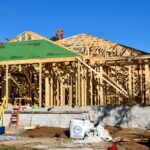Building-integrated photovoltaic panels (BIPV) are solar energy systems designed to be an integral part of a building’s envelope, such as roofs, facades, or windows, rather than being mounted externally. These panels serve a dual purpose: they replace traditional building materials while simultaneously generating electricity from solar energy. This integration allows for more efficient use of space and materials in modern architecture.
Unlike conventional solar panels that are typically added onto structures, BIPV systems blend seamlessly with building design, offering both aesthetic appeal and functionality. They can reduce a building’s reliance on external power sources and contribute to energy efficiency in a way that aligns with sustainable building practices.
Understanding Building Integrated Photovoltaic Panels
Building Integrated Photovoltaic (BIPV) panels serve both as functional building materials and as solar energy generators. These panels replace or merge with parts of the building envelope to create energy without adding separate modules.
They differ from traditional panels by integrating directly into roofs, façades, or windows, contributing to the building’s structure and aesthetics while producing electricity.
What Are Building Integrated Photovoltaic Panels
BIPV panels are photovoltaic materials embedded in or replacing standard building components like roofing, curtain walls, or skylights. Unlike traditional solar panels mounted on top of structures, these panels form part of the building envelope itself.
They offer a dual function: protecting the building from weather and generating renewable energy. This integration reduces material use and can improve the building’s overall energy efficiency.
BIPV systems are designed to blend visually with architectural elements. This makes them suitable for new constructions and retrofits where maintaining design integrity is important.
How BIPV Panels Function
BIPV panels operate by converting sunlight directly into electricity using photovoltaic cells embedded within building materials. These cells absorb solar radiation, generating electric current through the photovoltaic effect.
The panels connect to the building’s electrical system, supplying power for lighting, heating, or other uses. Excess electricity may be stored or fed back into the grid.
They also provide standard building functions such as thermal insulation and weather protection. This combination makes BIPV systems a practical and efficient renewable energy solution for buildings.
Types of BIPV Technologies
There are several types of BIPV based on application and material:
- Solar Shingles: Thin, flexible panels designed to mimic traditional roofing materials while producing power.
- Façade Systems: Larger photovoltaic panels integrated into building walls, often customizable for site-specific solar gain.
- Transparent or Semi-Transparent Windows: Photovoltaic cells incorporated into glazing to allow light transmission while generating electricity.
Each type has specific design considerations related to aesthetics, energy output, and building code requirements. The choice depends on the building’s design, orientation, and energy goals.
Benefits, Applications, and Design Considerations
Building-integrated photovoltaic (BIPV) panels generate electricity while serving as part of the building’s envelope. They improve energy efficiency, provide design flexibility, and require specific planning during installation. Each aspect impacts the overall performance and integration of BIPV systems in architectural projects.
Advantages of BIPV Integration
BIPV systems reduce reliance on external power by producing electricity on-site. This leads to lower energy bills and decreases demand on the grid. They can replace conventional building materials such as glass or roofing while maintaining structural integrity.
A key advantage is their aesthetic versatility. BIPV panels can be customized in size, shape, and color to blend with building designs, enhancing architectural appeal. They also contribute to sustainability by lowering carbon footprints through renewable energy generation.
Additional benefits include improved thermal insulation and weather protection since BIPV elements form part of the building envelope. These factors support long-term energy savings and increased building value.
Architectural Applications of BIPV
BIPV panels can be integrated into roofs, facades, windows, canopies, and skylights. This allows architects to incorporate renewable energy systems without sacrificing design intent or aesthetics. It is particularly useful in urban environments where space for separate solar arrays is limited.
Applications range from commercial buildings and offices to residential projects. Their versatility in format permits use in curtain walls or shading devices, simultaneously providing energy and comfort.
Urban planners favor BIPV for enhancing building sustainability and reducing dependency on fossil fuels. Integration into large-scale developments supports distributed energy generation and can contribute to energy code compliance.
Design and Installation Considerations
Designing with BIPV requires attention to solar orientation, shading, and structural support. Maximizing sun exposure is critical for optimal energy production. Designers must assess facade angles and roof slopes to ensure panels receive adequate sunlight.
Material compatibility and integration with existing building systems must be evaluated. Electrical wiring and inverters need to be planned from the earliest stages of design to avoid conflicts.
Installation complexity varies with panel type and building location. Maintenance access and durability under local weather conditions are essential considerations to maintain system efficiency over time. Coordination between architects, engineers, and installers is crucial.



